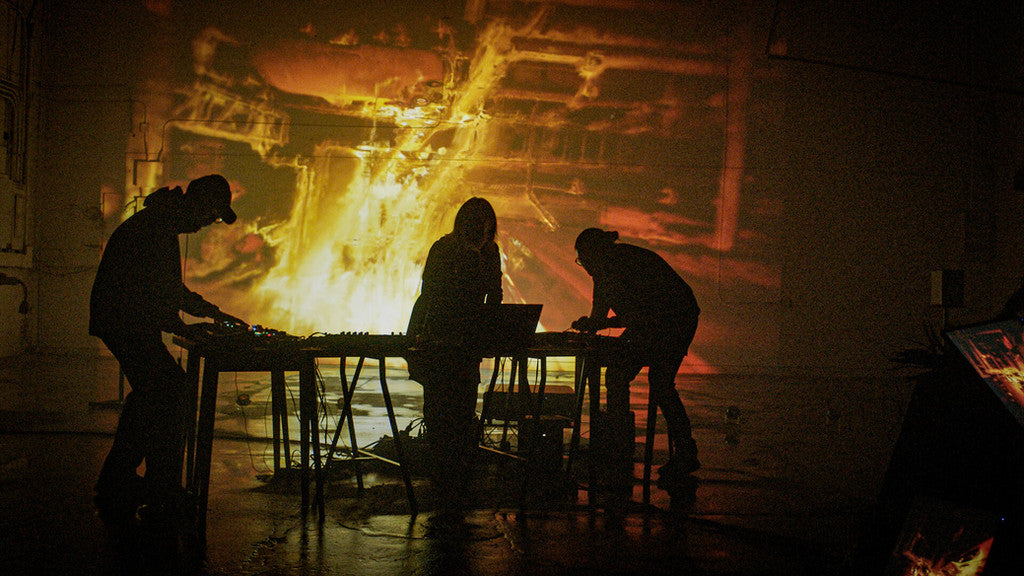Architectural Thinking in Virtual Spaces: Chen shows how principles from physical architecture and interior design can be applied to virtual environments, creating more emotionally resonant digital experiences that consider lighting, circulation, and spatial relationships.
Documentary Techniques in Game Engines: By drawing inspiration from documentary filmmaking like Baraka, Chen demonstrates how traditional cinematographic approaches can be adapted to game engine work, bringing organic authenticity to digital environments.
Live Performance as Digital Innovation
Chen's pioneering "live cinema" approach reveals how game engines can transcend pre-rendered content, enabling real-time artistic control and audience interaction in ways that transform traditional performance paradigms.
In the evolving landscape of digital arts, Ina Chen stands at the intersection of architecture, filmmaking, and game engine technology. Her groundbreaking work in virtual production demonstrates how real-time tools can transform live performance and storytelling, pushing the boundaries of what's possible in digital art.
BRIDGING PHYSICAL AND VIRTUAL SPACES
Chen's journey began in interior design and architecture, where she developed a deep understanding of how spaces shape experience. "I was trained in the mindset of the surrounding space around me—lighting, temperature, and circulation," Chen explains. This foundation proved invaluable as she transitioned to virtual environments, where she brought physical world principles into digital realms.
Her early inspiration came from architectural innovators like Rem Koolhaas, particularly his Seattle library project. "These types of architecture projects, especially when dealing with exterior and interior, that in-between space, really fascinated me," Chen recalls. The immersive theater production Sleep No More in New York also proved transformative, showing her how space and performance could interweave to create compelling narratives.

AN INTERDISCIPLINARY PATH
Chen's route to virtual production wasn't linear. After studying interior design at Pratt Institute in New York, she took a gap year for an exchange program in Copenhagen focusing on urban design. This was followed by film studies in Berlin, where she was drawn to Europe's vibrant cultural and music scene.
The flexibility of her education proved crucial. "The Pratt interior design program was super flexible," Chen notes. "They really encouraged me to think beyond floor plans and explore how to tell stories." This multidisciplinary background, while initially challenging in job interviews, ultimately became an asset. "Game engines became the perfect tool that allows me to do pretty much everything I was interested in," she explains.
DEVELOPING A UNIQUE VISUAL LANGUAGE
Despite working with widely-used tools like Unreal Engine, Chen has cultivated a distinctive artistic voice. "I tend to have my own camera language," she notes. "I really like to work with the camera as if it's in the real world." Drawing inspiration from documentary films like Baraka, Chen approaches virtual cinematography with a naturalistic eye, often choosing static wide shots over constant movement.
Her process involves extensive storyboarding and experimentation. "For any project, I do a pretty massive amount of storyboarding and try out different combinations of shots," she explains. She'll often create multiple versions with different moods - perhaps one with a single long camera shot and another with quick cuts - to find what best serves the concept.
To combat the sometimes-sterile perfection of game engine graphics, Chen adds "a touch of analog back to Unreal." She employs specific blur and bloom effects, ensuring her work maintains a organic quality that sets it apart from typical game visuals.

MERGING MUSIC AND VISUALS
Music plays a central role in Chen's creative process. "When I'm working with any sort of visual medium, it's about putting on headphones and really listening to the music, letting the visual play out in my head," she describes. This approach has led to collaborations with artists like Martin Garrix and Nicki Minaj, where she transforms musical performances through virtual production.
Her work spans both commercial and personal projects. For the Nicki Minaj performance, she created pre-rendered sequences in Unreal Engine that were integrated with the physical stage design. "They had some previous rendering of how they were going to do the actual physical stage, and they wanted some form of set extension," Chen explains. The final result combined her animations with live VJ programming during the broadcast.
PIONEERING LIVE CINEMA
Chen's most innovative work comes in the form of "live cinema" - real-time virtual productions performed in front of audiences. In her piece "4993 Feet Under," which explores the Deepwater Horizon disaster, she combines live control of virtual environments with musical performance.
"This piece would be very tricky to view as a film," Chen explains. "There are so many moments where I want the slowness of objects moving that people can engage with just by staring at it." The live format allows her to respond to audience reactions, adjusting lighting, effects, and timing in real-time.
The development process for "4993 Feet Under" began with extensive research. Working with the New Museum's New Inc incubator program, Chen drew inspiration from animism and focused on viewing the world from different species' perspectives. The piece travels vertically through an ocean column, starting 4,993 feet below the surface where the Macondo well exploded during the Deepwater Horizon disaster.
TECHNICAL INNOVATION MEETS ARTISTIC CONTROL
During live performances, Chen maintains precise control over the virtual environment. "Almost all the lighting, from the directional setup to the tiniest point light, was live controlled," she describes. Using a MIDI setup, she can manipulate everything from exposure settings to post-processing effects, creating a uniquely responsive viewing experience.
The technical setup involves careful preparation. Chen works closely with composers from the early stages, developing the audio landscape alongside the visuals. "We started building out a draft of the audio landscape using open source audio effects, the sound of whales, shipwrecks, things like that," she explains. The visual elements are then blocked out and refined in response to the sound.
The audience response validates this approach. Chen recalls a compelling moment: "When the whale was falling for about ten minutes, and we had this huge crowd of stingrays flying into the environment... everyone stood up, and the energy of the room changed. That really changed my energy, too."
EMBRACING TECHNOLOGICAL EVOLUTION
Chen maintains an optimistic but thoughtful perspective on emerging technologies like AI. "It's kind of human nature that we don't really solve any issue until the problem has already caused some damage," she reflects. While acknowledging current concerns about regulation and proper usage, she sees potential for these tools to free artists from repetitive technical tasks, allowing them to focus more on conceptual development.
Looking ahead, Chen sees potential for even greater audience interaction in virtual performances. Inspired by platforms like Twitch, she envisions future projects where audiences can actively participate in shaping the performance through interactive interfaces. "Maybe next performance project can take a little bit of that more to have more interaction with audience by providing them certain type of interface," she suggests.
Ina Chen's work demonstrates how game engines can transcend their origins to become powerful tools for artistic expression. By combining architectural principles, cinematographic techniques, and musical sensitivity with real-time virtual production, she's creating new possibilities for live performance. Her approach shows that while technology provides the foundation, it's the human element - the ability to respond to and connect with an audience - that brings virtual worlds to life.













